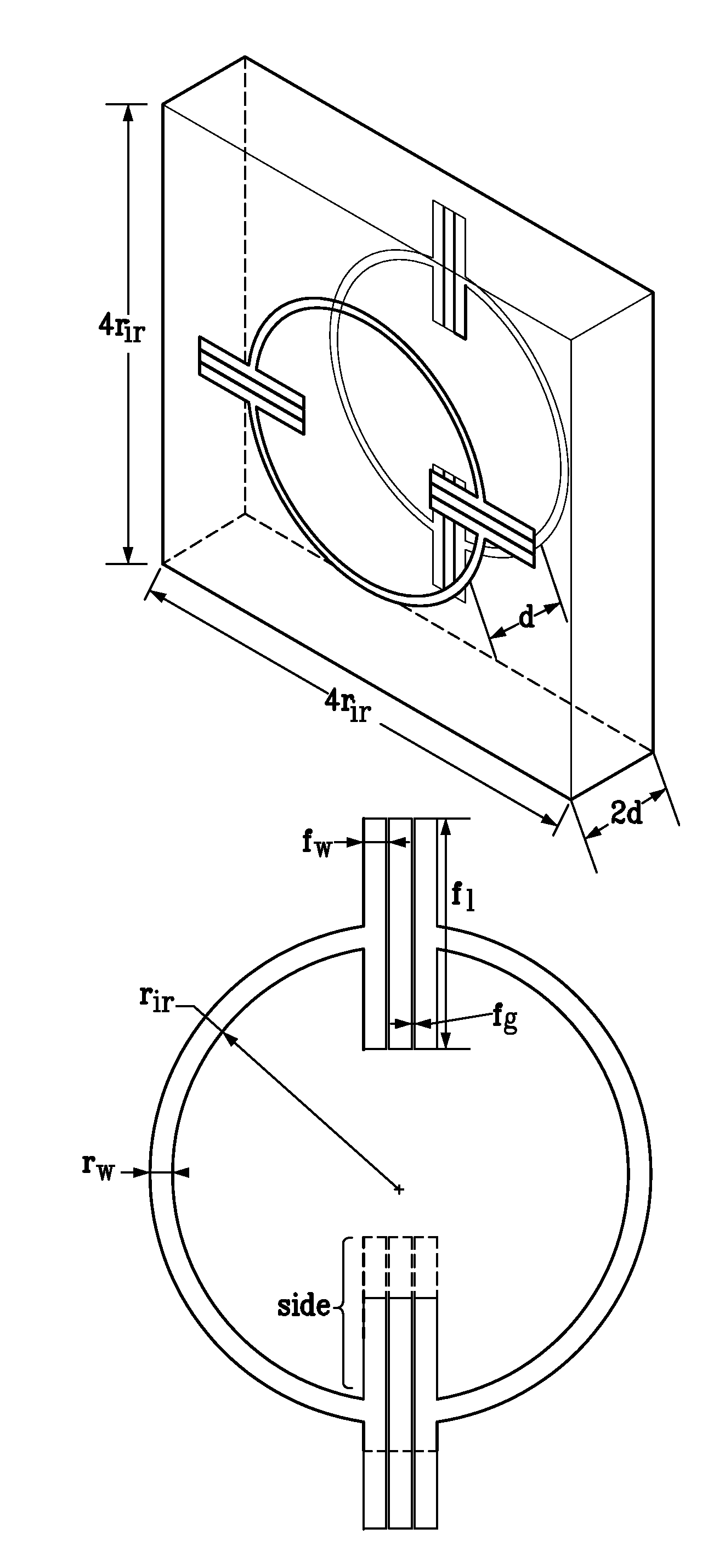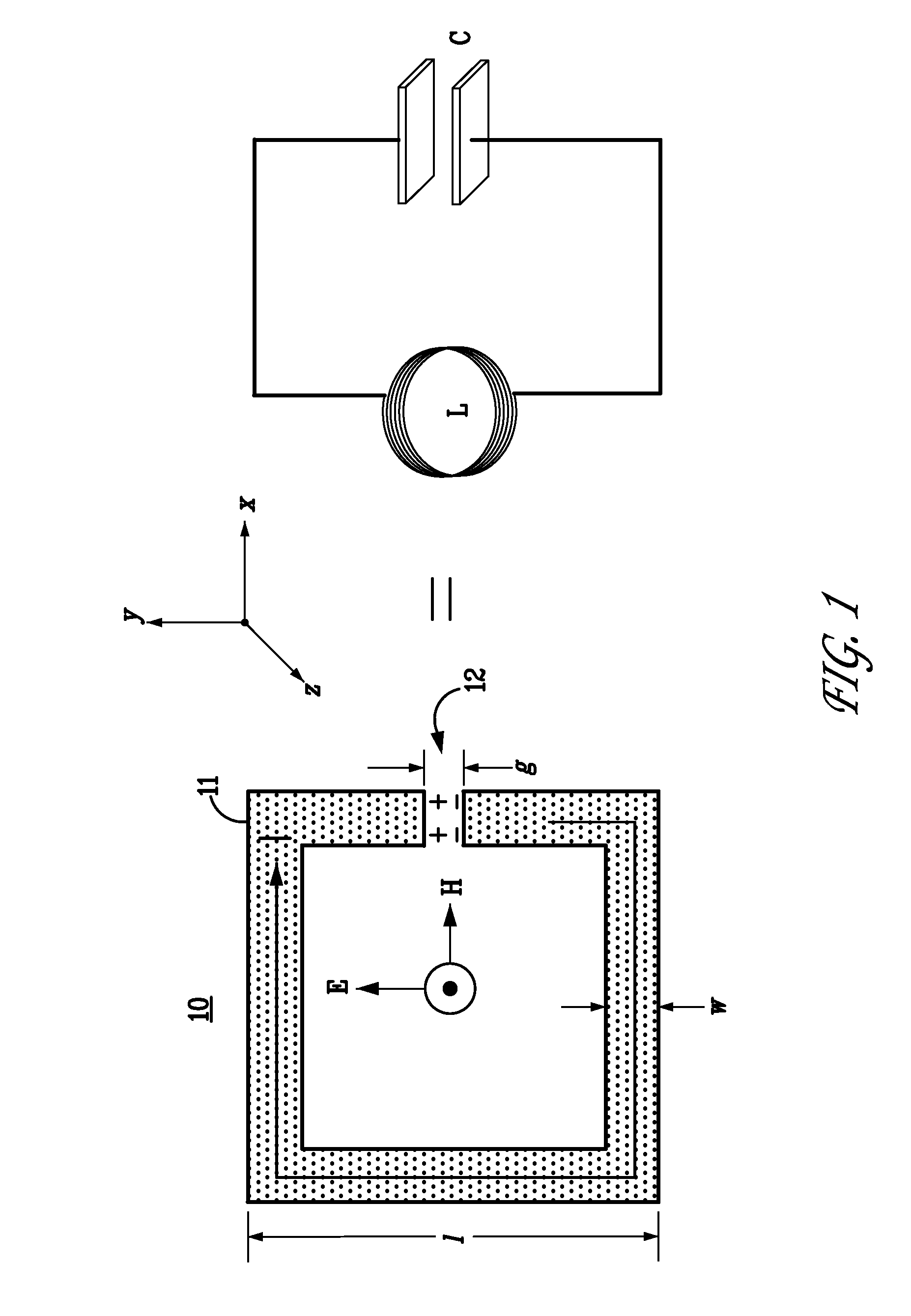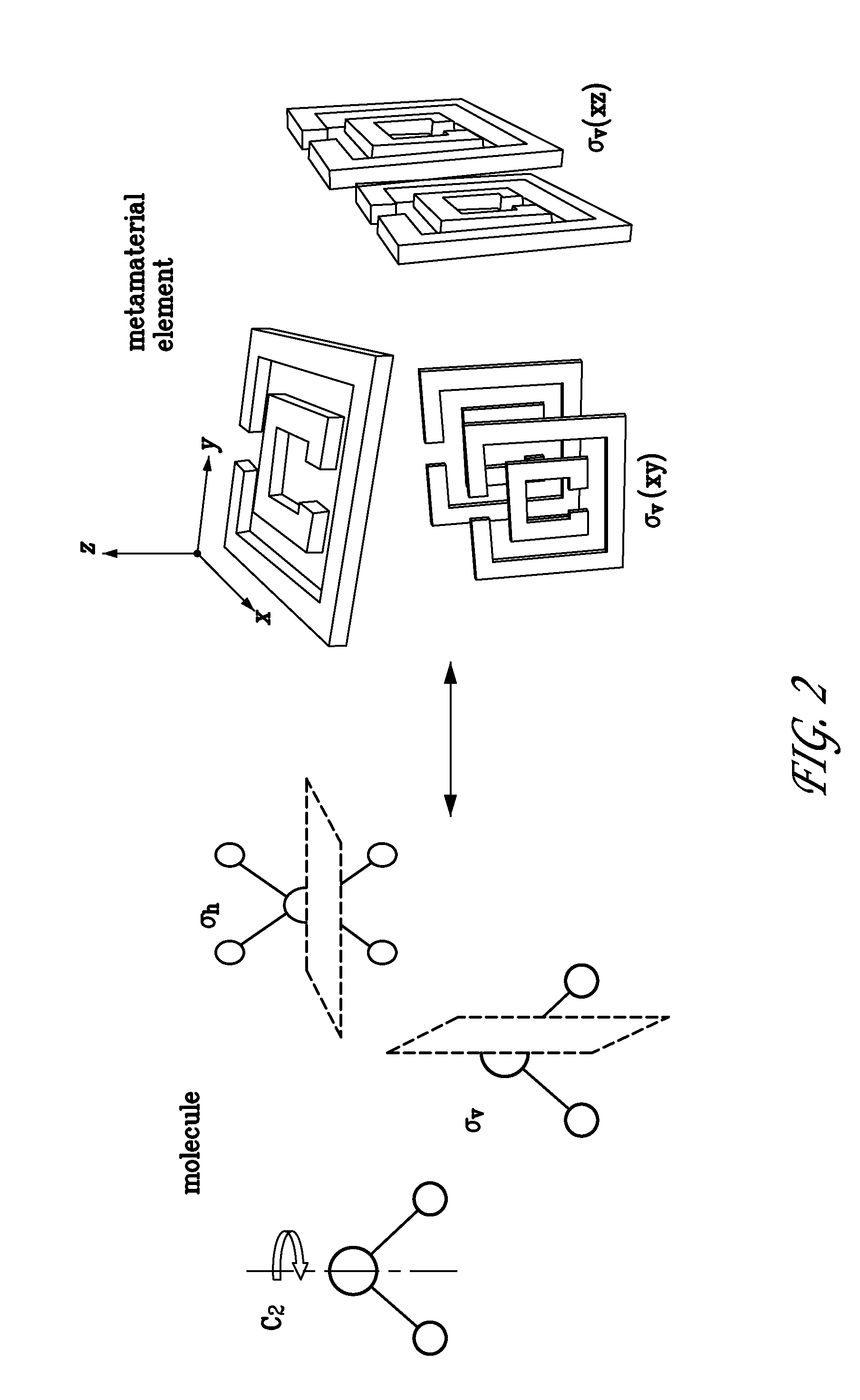Bianisotropic Metamaterial
a metamaterial and bianisotropic technology, applied in the field of metals, can solve the problems of complex problem of designing electromagnetic metamaterials, intractable problems, and inability to solve them quickly
- Summary
- Abstract
- Description
- Claims
- Application Information
AI Technical Summary
Benefits of technology
Problems solved by technology
Method used
Image
Examples
Embodiment Construction
[0043]A method based on group theory can be used for the design and optimization of the electromagnetic properties of metamaterials, the basis for which was recently proposed by Padilla and subsequently demonstrated by Wongkasem et al. See W. J. Padilla, Optics Express 15 (4), 1639 (2007); and N. Wongkasem et al., Progress in Electromagnetics Research 63, 295 (2006). Group theory can be used to predict electric and magnetic resonances of metamaterial inclusions for any incident field, including the existence and isotropic nature of the electromagnetic constitutive relationship. Using this framework, the fundamental properties of a metamaterial design can be elucidated based on the symmetry class to which the unit cell belongs.
[0044]Group theory has been used extensively in chemistry, where molecules are classified by symmetry and the spectroscopic or molecular orbital properties identified according to symmetry group. See F. A. Cotton, Chemical Applications of Group Theory, 3rd ed.,...
PUM
 Login to View More
Login to View More Abstract
Description
Claims
Application Information
 Login to View More
Login to View More - R&D
- Intellectual Property
- Life Sciences
- Materials
- Tech Scout
- Unparalleled Data Quality
- Higher Quality Content
- 60% Fewer Hallucinations
Browse by: Latest US Patents, China's latest patents, Technical Efficacy Thesaurus, Application Domain, Technology Topic, Popular Technical Reports.
© 2025 PatSnap. All rights reserved.Legal|Privacy policy|Modern Slavery Act Transparency Statement|Sitemap|About US| Contact US: help@patsnap.com



